More than 5 billion Bluetooth devices by 2021

In 2018, nearly 4 billion devices will use Bluetooth technology to communicate, and it’s ready to be the ultimate solution for IoT over the next few decades.
Since its inception 20 years ago, Bluetooth has continuously evolved, expanding innovatively, giving the opportunity for devices to be connected. Whether a connection for wireless audio, portable devices, tracking assets or automating buildings, Bluetooth technology is the innovative force that creates new consumers, commercial and industrial markets. The bluetooth device community is constantly expanding, improving its technology to solve connectivity problems and addressing new market opportunities.
Community
The bluetooth user community is constantly growing. At the end of 2017, the community grew with more than 33,000 companies evenly distributed in all regions of the world, highlighting the true global footprint of Bluetooth technology.
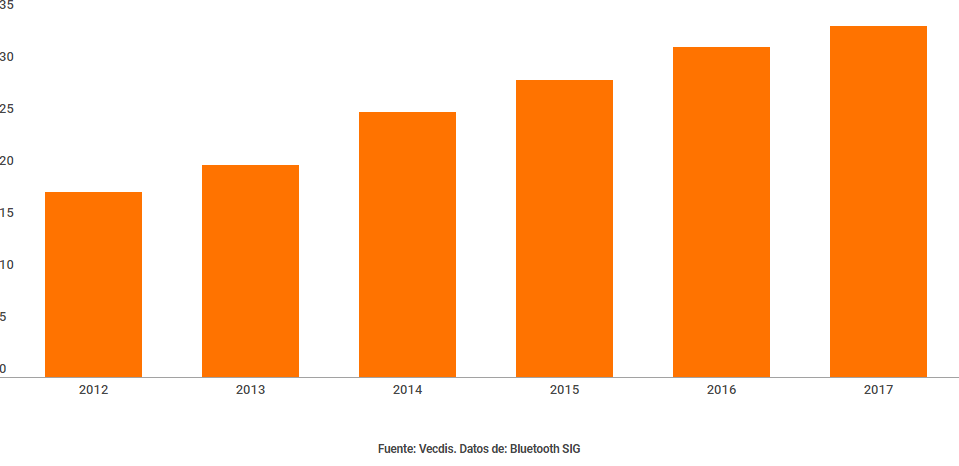
This growth is mainly due to the working groups and committees that are constantly working to find innovation in this technology. In addition to being the reason for the global wireless standard that powers the internet of things. Another consequence of the high number of users of bluetooth technology is the expansion to new markets. It is a technology as has been said before, constantly growing and has never shown signs of slowing. By 2020, the number of bluetooth devices worldwide is expected to exceed 5 billion.
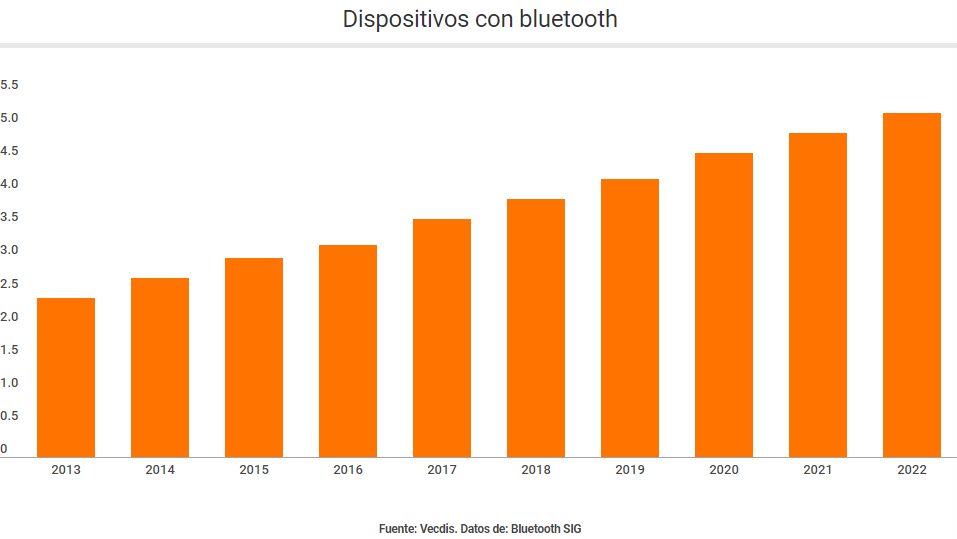
Technology
As the demands of IoT continue to grow, so does bluetooth technology. After first addressing peer-to-peer connectivity, expandbroadcast communications to enable indoor positioning and location services. Now, bluetooth mesh networks are offering emerging markets, which need a reliable wireless solution the ability to establish large-scale device networks.
However, despite the expansion of Bluetooth technology to support a wider range of topologies and new use cases, the use of bluetooth for audio transmission and data transfer remains the one that is having the most growth.
Followed by its use to mark the location of the device both indoors and outdoors. This use is booming, thanks to new smart building constructions and “Smart” locations, where a large deployment of IoT devices is available.
Markets
As mentioned above, bluetooth technology is widespread in a large number of sectors or markets. They range from communications like audio and entertainment, to computers or tables and getting to smart constructions.
Mobile phones, tables and computers
Devices such as computers, tablets or mobile phones have become portals through which people experience sensations and experiences. Bluetooth technology is native to all of them, with more than 2 billion of these Bluetooth devices expected to be the industry leader in 2018, making bluetooth the ideal technology for IoT solutions.
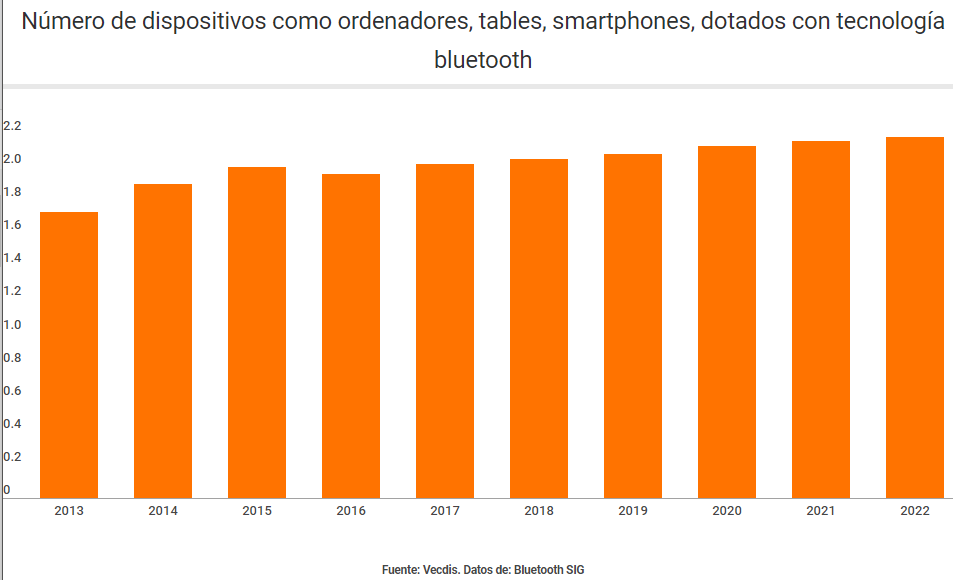
Audio and entertainment
Eliminating the hassle of cables on headphones, speakers and home entertainment devices, bluetooth offers consumers reliable and convenient access to their music and entertainment. Bluetooth is now synonymous with wireless in the audio and entertainment market and has forever changed the way the world is experienced. The smart speaker market is expected to triple worldwide by 2022. An example of this is bluetooth speakers, which have come to market to stay, such as the Soundcore,Flare speaker, which can even emit sound while in the water.
Automotive
Bluetooth technology has created new connections between the vehicle and the driver, thanks to which it has increased road safety and improved the experience in the car. Bluetooth is the leading technology in the automotive industry, thanks to its info-entertainment systems that allow the use of hands-free or wearables in the vehicle. By 2025, Southeast Asia will have the largest number of cars with bluetooth connectivity worldwide.
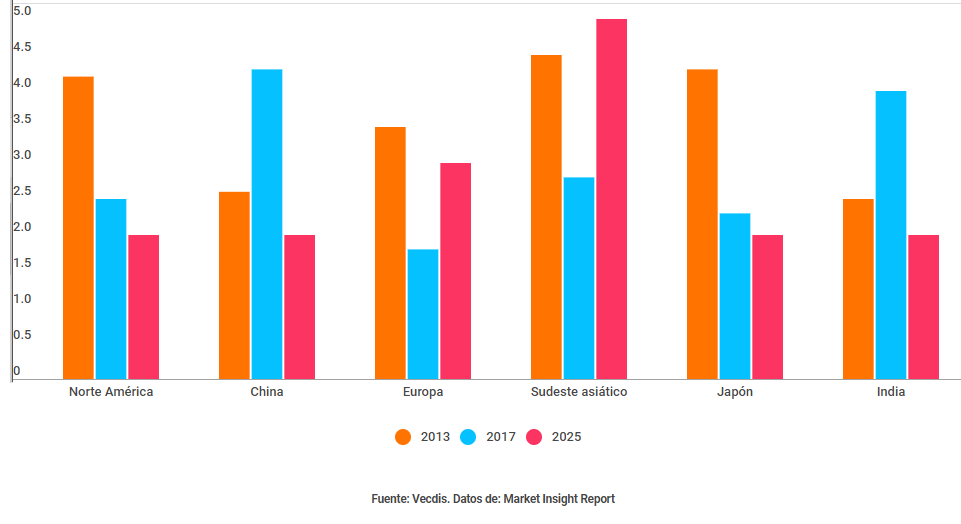
Connected devices
They are those that range from the most common devices of the home, to those that are used in the field of medicine. By connecting billions of everyday devices, Bluetooth technology is helping to transform IoT vision into reality. Robots intended for consumption with bluetooth connectivity will reach 80 million by 2020 globally.
In the field of health, connectivity via bluetooth is expected to contribute a significant proportion of revenue thanks to the direct connection it offers with mobile phones, TV, computers, tablets, etc.
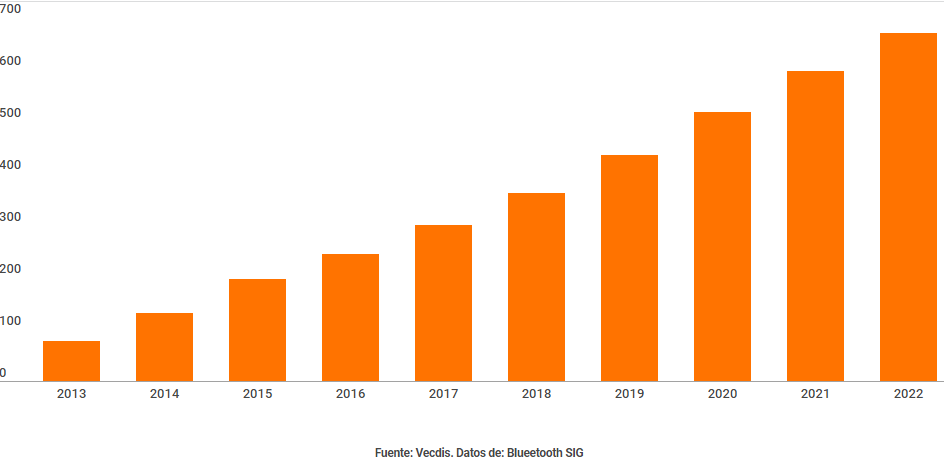
Smart buildings
Bluetooth connectivity expanded the definition of intelligent construction by identifying indoor positioning and location, a feature focused on improving the visitor experience, increasing occupant productivity and optimize space utilization. Retail and healthcare continue to be the first to test smart technology in construction. Retailers are among the first to adopt Bluetooth to enable personalized promotions and search services for shoppers, increasing sales and reducing operating costs. To combat high cost disadvantages, provide better patient care, and increase efficiency levels, buildings for health are adopting Bluetooth technology to monitor patients, track assets, and improve emergency services. It is forecast, that 100 million smart health devices with bluetooth connectivity will be implemented per year, before 2022 globally.
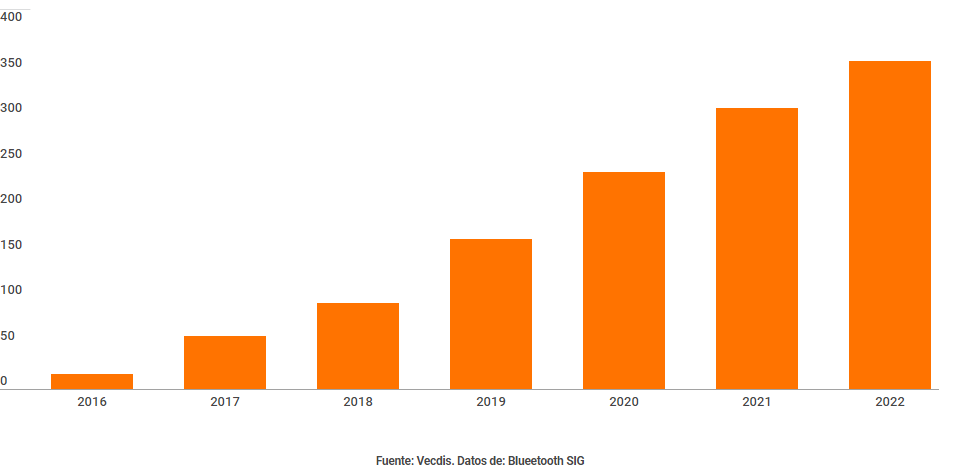
Smart Cities
As pressure on resources and services and public funds increases, so does the need for smarter solutions to effectively manage growing urban populations.
Bluetooth technology is connecting smart cities to improve the visitor experience and improve the quality of life for citizens, businesses and employees.
By 2019, 84% of the world’s airports will use location services, based on bluetooth technology. And this is possible since according to research conducted by Quatrz magazine, the bluetooth of mobile devices is emitting information even when users have turned off that option on their phones.

Smart home
Whether connecting TVs to soundbars or computers with keyboards, Bluetooth technology has been at the heart of the home for years. Now, the bluetooth connection network is bringing a degree of security and reliability to the home high, thanks to automation applications. In addition to improving other aspects of the home such as lighting, and is expected, the annual growth of smart lighting with bluetooth connectivity will increase by 54% in the next 5 years. An example of the investments being made in this area is alibaba’s announcement at Ces Asia 2018, which will allocate 10 million mesh module to equip different IoT devices with this technology allowing for a wide range of devices capable of creating new optimal connection interfaces at a lower cost.
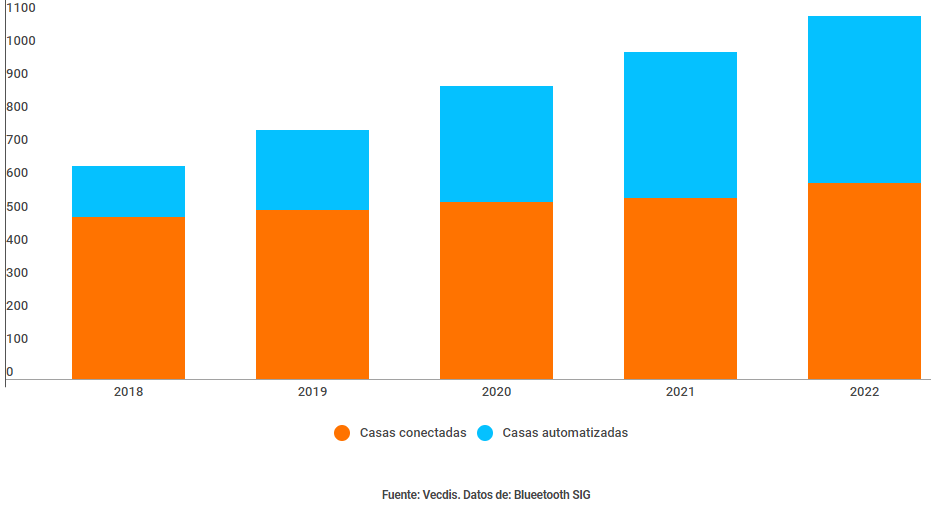
Conclusions
The connection drives innovation, which in turn creates new markets. This is the approach of a technology that allows people to be constantly connected, whether with their vehicle, with their doctor through information sent to a surveillance device or with their home.
Bluetooth is the basis of the connectivity of IoT devices, so we should not forget their importance not only on home devices but on any device that you want to keep active.


